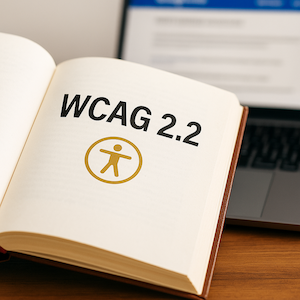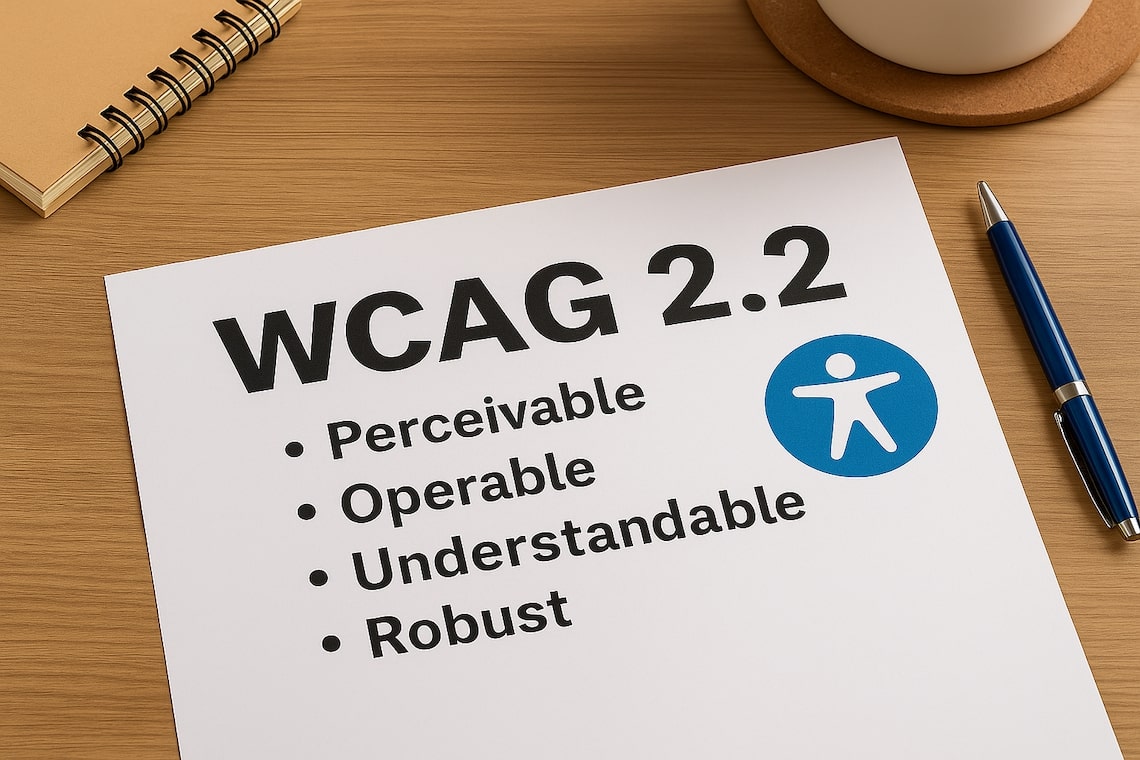If you’ve ever had to read the Web Content Accessibility Guidelines (WCAG), you know they’re packed with technical language and dense terminology. But don’t worry—understanding WCAG 2.2 doesn’t have to be complicated.
In this plain-English guide, we’ll explain what WCAG 2.2 is, why it matters, and how you can apply its principles to make your website more accessible, inclusive, and legally compliant.
What Is WCAG 2.2?
WCAG stands for Web Content Accessibility Guidelines. These are the international standards developed by the World Wide Web Consortium (W3C) to help make websites and digital tools usable for everyone, including people with disabilities.
Version 2.2 is the latest official release. It builds on earlier versions (2.0 and 2.1) and adds new success criteria that focus on users with cognitive and mobility challenges.

Why WCAG Compliance Matters
Following WCAG standards isn’t just good practice—it’s often a legal requirement. In the U.S., courts typically refer to WCAG 2.1 or 2.2 when evaluating ADA compliance. In the EU, the upcoming EAA (European Accessibility Act) also relies on WCAG as the benchmark.
So whether you’re improving user experience, optimizing for SEO, or avoiding lawsuits, understanding WCAG is key.
The Four Principles of WCAG: POUR
WCAG 2.2 is built on four foundational principles:
- Perceivable – Users must be able to perceive the content.
- Examples: Provide alt text for images, use sufficient color contrast, and offer captions for videos.
- Operable – Users must be able to operate the interface.
- Examples: Ensure keyboard navigation, avoid time limits, and provide focus indicators.
- Understandable – Users must be able to understand the information.
- Examples: Use plain language, consistent navigation, and readable fonts.
- Robust – Content must be robust enough to work with various assistive technologies.
- Examples: Use semantic HTML, follow ARIA roles and labels.
What’s New in WCAG 2.2?
Here are a few of the key additions in version 2.2:
- Dragging Movements: Users should be able to complete functions without dragging (important for users with motor impairments).
- Target Size (Minimum): Interactive elements should be large enough to be easily tapped or clicked.
- Consistent Help: If you provide help like chat or FAQs, it should appear consistently across pages.
These updates improve accessibility for users who navigate with touch screens or have cognitive limitations.
Real-World WCAG Examples
Let’s translate this into everyday website features:
- If your form fields don’t have clear labels, screen readers can’t interpret them. That’s a WCAG fail.
- If someone can’t increase text size or turn on a high-contrast mode, your site may be hard to use.
- If your navigation layout changes from page to page, it can confuse users who rely on consistency.
How to Check WCAG Compliance
You can use tools like Reguweb to quickly scan your site and flag violations. Reguweb’s scanner is aligned with WCAG 2.2 and covers the most common issues:
- Color contrast problems
- Missing alternative text
- Form input errors
- Heading hierarchy issues
- Interactive element sizing
After scanning, Reguweb provides a full report with actionable fixes—no developer needed for the basics.
Compliance Doesn’t Mean Perfection
Accessibility is a spectrum. The goal isn’t to create a “perfect” site but to remove as many barriers as possible. WCAG 2.2 encourages continuous improvement.
Even if you meet most guidelines, you should:
- Document your efforts
- Provide an accessibility statement
- Set a schedule for regular re-scans and updates
Final Thoughts
WCAG 2.2 doesn’t have to be overwhelming. When you understand the POUR principles and use a tool like Reguweb, making your website accessible becomes manageable—even empowering.
By embracing accessibility, you:
- Reach more users
- Improve usability for everyone
- Future-proof your digital presence
- Show your commitment to inclusivity
Scan your site for WCAG 2.2 compliance today at Reguweb.com and start building a better web for all.
